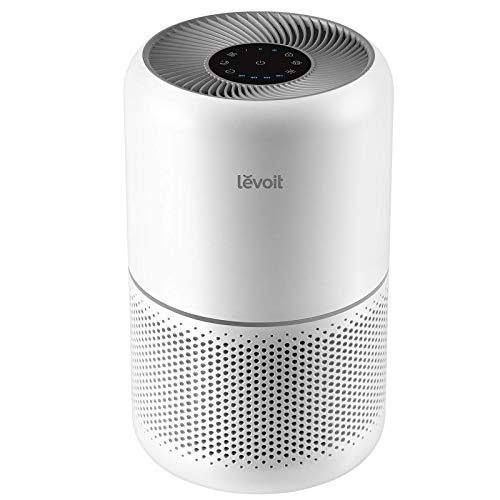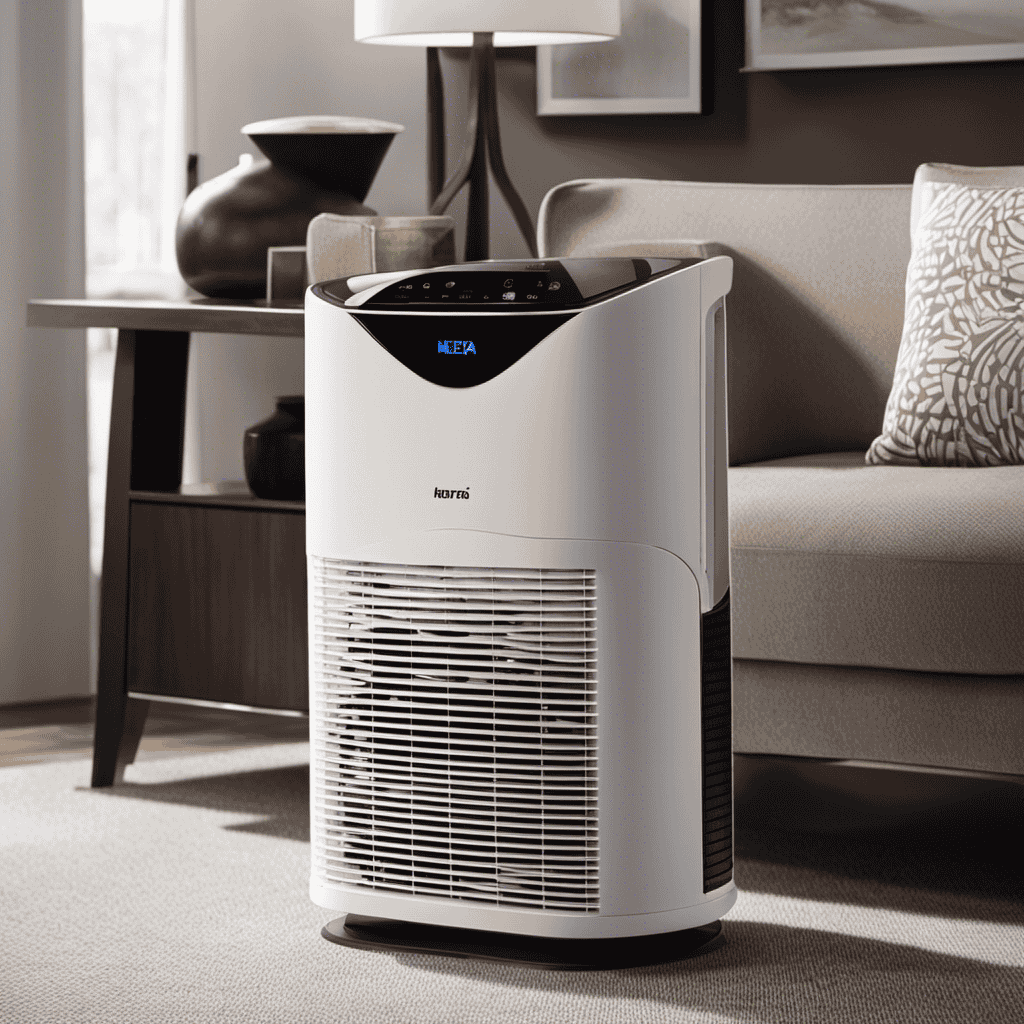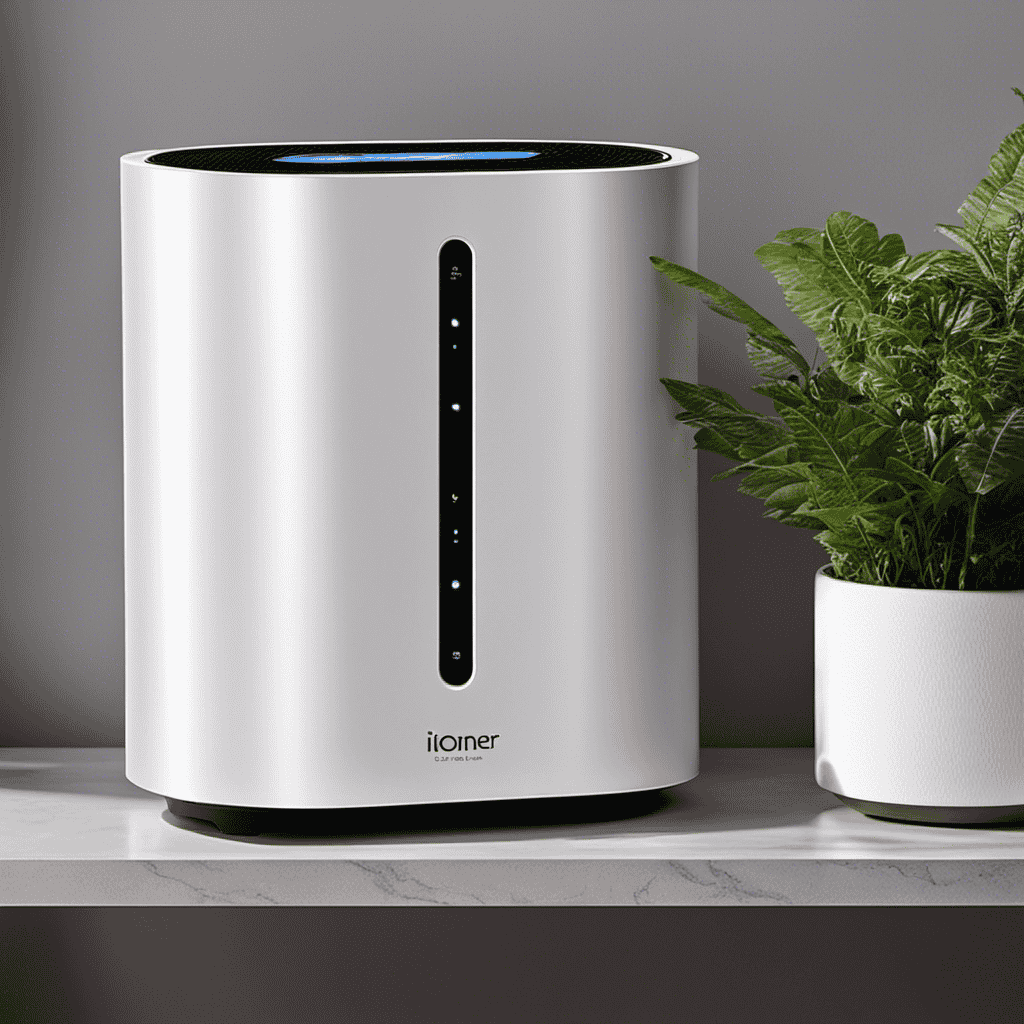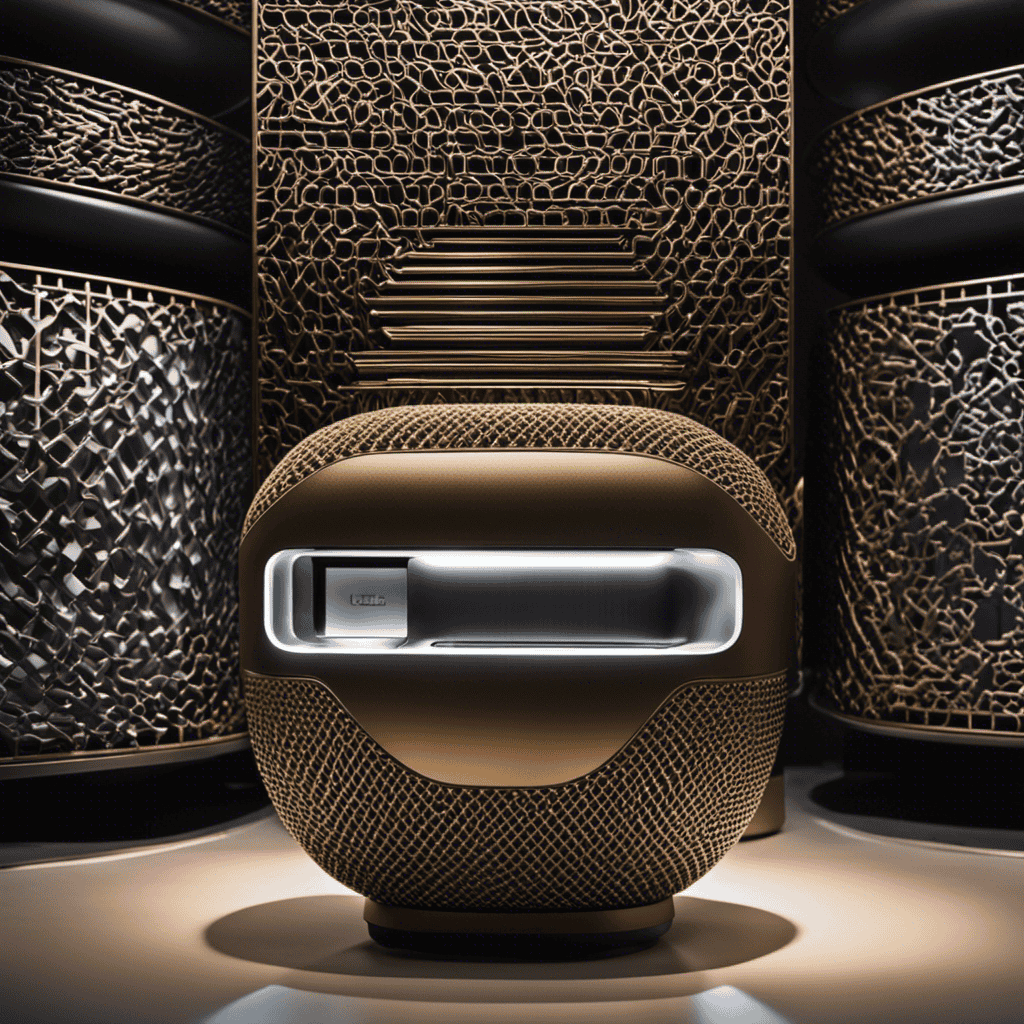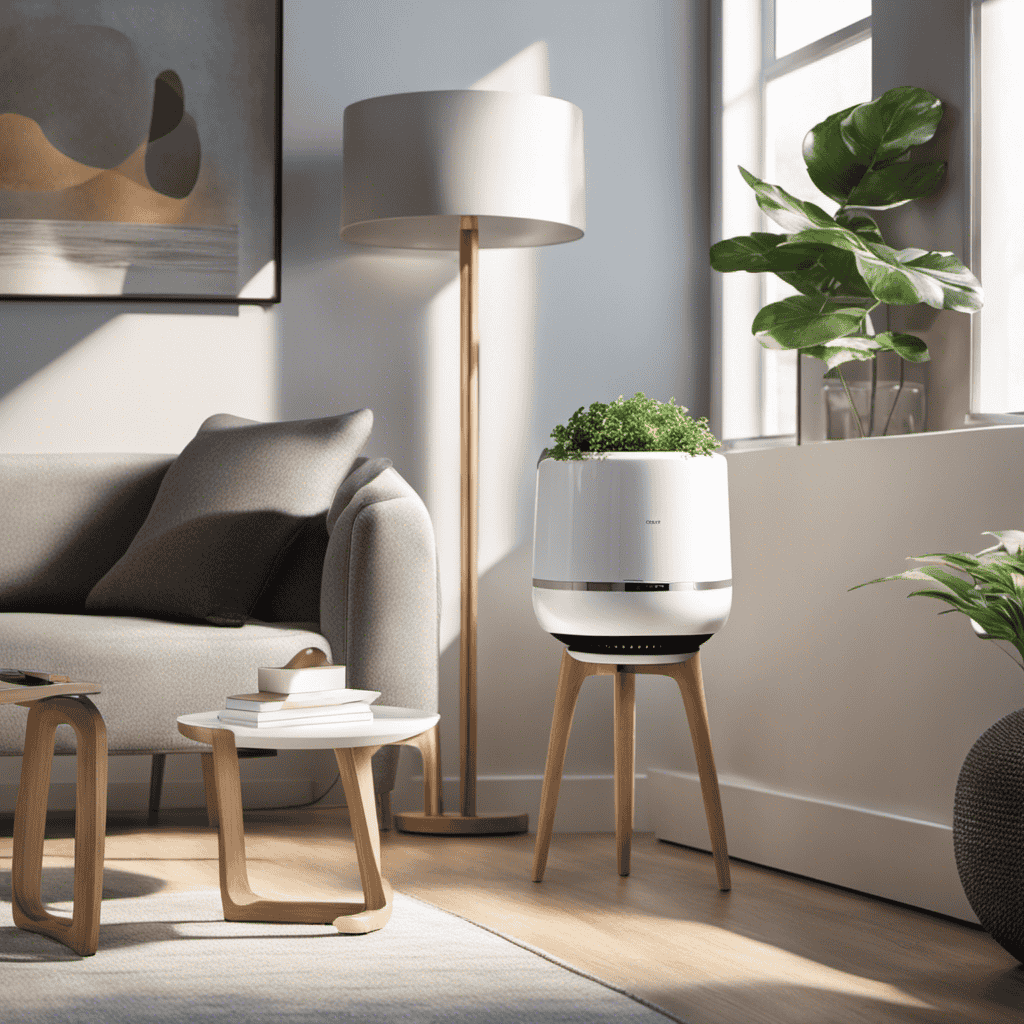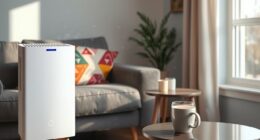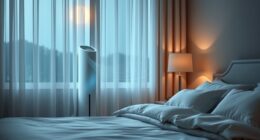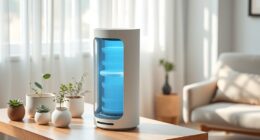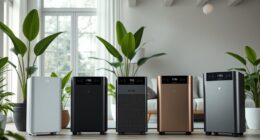As a person who has dealt with allergies for many years, I recognize the significance of having clean and healthy air. This is why I chose to explore the realm of air purifiers.
In this article, we will explore the benefits of using an air purifier, how they work, and the different types available. We will also discuss key features to look for when choosing an air purifier and how to properly maintain and clean it.
Join me on this journey as we explore the science behind enhancing indoor air quality.
Key Takeaways
- Air purifiers improve overall health by reducing respiratory problems and allergies.
- They reduce the risk of asthma attacks, coughing, and other respiratory issues.
- Air purifiers enhance sleep quality and overall well-being.
- They alleviate symptoms of seasonal allergies such as sneezing, itching, and congestion.
The Benefits of Using an Air Purifier
You’ll love the benefits of using an air purifier in your home. Not only can it improve your health, but it can also reduce allergies. Air purifiers work by removing pollutants and allergens from the air, creating a cleaner and healthier environment for you and your family.
One of the main benefits of using an air purifier is the improvement in your overall health. Airborne pollutants such as dust, pet dander, and mold spores can trigger respiratory problems and allergies. By removing these particles from the air, air purifiers can help reduce the risk of asthma attacks, coughing, and other respiratory issues. This can lead to better sleep quality and overall well-being.
Additionally, air purifiers can significantly reduce allergies. They can capture and eliminate common allergens like pollen, dust mites, and pet dander. This is especially beneficial for individuals who suffer from seasonal allergies or have pets at home. By reducing the levels of these allergens in the air, air purifiers can help alleviate symptoms such as sneezing, itching, and congestion.
Now that you understand the benefits of using an air purifier for improving health and reducing allergies, let’s explore how air purifiers work.
How Air Purifiers Work
One way air purifiers work is by filtering out pollutants and allergens from the surrounding air. This is achieved through the use of advanced air purifier technology. Here are four key aspects of how air purifiers function:
-
Filtration: Air purifiers contain filters that capture particles such as dust, pollen, pet dander, and smoke. These filters, typically made of materials like activated carbon or HEPA (High-Efficiency Particulate Air), effectively trap and remove contaminants from the air.
-
Circulation: Air purifiers use fans to draw in the surrounding air, which then passes through the filters. The purified air is subsequently released back into the room, improving overall air quality.
-
Ionization: Some air purifiers employ ionizers to release negatively charged ions into the air. These ions attach to airborne pollutants, causing them to become too heavy to remain airborne. The particles then fall to the ground or get trapped in the air purifier’s filters.
-
UV-C Light: Certain air purifiers incorporate UV-C light technology. This type of light emits ultraviolet radiation that destroys the DNA of microorganisms like bacteria and viruses, neutralizing their harmful effects.
To ensure optimal performance and longevity, regular air purifier maintenance is essential. This includes cleaning or replacing filters as recommended by the manufacturer, regularly wiping down the exterior surfaces, and ensuring proper ventilation.
Different Types of Air Purifiers
When it comes to choosing an air purifier, there are several important factors to consider.
One of the key points to evaluate is the filter effectiveness, as it directly impacts the air quality improvement.
Additionally, size and portability options should be taken into account to ensure the air purifier can fit comfortably in the desired space and can be moved around if needed.
Studying these aspects in a thorough and scientific manner will help make an informed decision when selecting an air purifier that best suits your needs.
Filter Effectiveness Comparison
To compare the effectiveness of filters, start by researching the different types available and their respective ratings.
Here are four key factors to consider when comparing air purifier filters:
-
Filter Type: Different air purifier brands offer various filter types, such as HEPA filters, activated carbon filters, and UV filters. Each type targets different pollutants, so choose the one that suits your specific needs.
-
Filter Efficiency: Check the filter’s efficiency rating, often indicated by a percentage. Higher percentages indicate better filtration of particles, allergens, and pollutants.
-
Filter Replacement Cost: Consider the cost of replacing filters over time. Some brands offer filters that require less frequent replacement or come with long-lasting filters, which can save you money in the long run.
-
Filter Lifespan: Look into the filter’s lifespan, which determines how long it can effectively remove pollutants. Longer lifespans mean less frequent filter replacements, reducing maintenance costs.
Size and Portability Options
Consider your space and mobility needs when choosing an air purifier. Different sizes and portability options are available. Portable air purifiers are designed to be easily moved from one room to another. This allows you to enjoy clean air wherever you go. These compact air purifiers are lightweight and usually come with handles or wheels for easy transportation. They are ideal for small spaces such as bedrooms, offices, or even cars.
Despite their small size, portable air purifiers are equipped with powerful filtration systems. These systems effectively remove pollutants, allergens, and odors from the air. They often use HEPA filters, which are known for their high efficiency in capturing small particles.
Key Features to Look for in an Air Purifier
When it comes to choosing an air purifier, two key factors that should be considered are the effectiveness of the filter type and the room coverage area.
The effectiveness of the filter type determines how well it can remove pollutants from the air, such as dust, pollen, and pet dander.
Room coverage area refers to the size of the space that the air purifier can effectively clean, ensuring that the air in the entire room is purified.
These two features are crucial in ensuring that the air purifier effectively improves the air quality in your home or office.
Filter Type Effectiveness
The HEPA filter is highly effective at removing small particles from the air. It is one of the most popular types of air filters due to its efficiency in capturing particles as small as 0.3 microns.
Here are four benefits of using HEPA filters:
-
Allergen Reduction: HEPA filters can trap common allergens such as pollen, pet dander, and dust mites, providing relief for allergy sufferers.
-
Improved Indoor Air Quality: By capturing airborne pollutants, HEPA filters help to improve the overall air quality in your home, reducing the risk of respiratory issues.
-
Odor Elimination: Activated carbon filters, often paired with HEPA filters, can effectively remove odors from the air, such as smoke, cooking smells, and pet odors.
-
Asthma Relief: HEPA filters can trap asthma triggers like mold spores and bacteria, reducing the likelihood of asthma attacks.
With these benefits in mind, it is important to consider the room coverage area of an air purifier to ensure maximum effectiveness in filtering the air and providing clean, fresh air throughout your space.
Room Coverage Area
To ensure maximum effectiveness, make sure you know the room coverage area of your air purifier. The room size plays a crucial role in determining the efficiency of your air purifier. The size of the room directly affects the airflow and the ability of the purifier to clean the air effectively.
When choosing an air purifier, it is essential to consider the square footage of the room and match it with the recommended coverage area of the purifier. Placing an air purifier in the right location is equally important. It is recommended to place the purifier in a central location to allow for optimal air circulation. Avoid placing it near walls or obstacles that may obstruct the airflow.
Choosing the Right Size Air Purifier for Your Space
You should consider the square footage of your space when choosing the right size air purifier. The size of the air purifier is important because it determines how effectively it can clean the air in your room.
Here are four factors to consider when choosing the right size air purifier for your space:
-
Room size: Measure the square footage of your room to determine the appropriate air purifier size. A larger room will require a more powerful air purifier to effectively clean the air.
-
Clean Air Delivery Rate (CADR): Look for an air purifier with a CADR rating that matches your room size. CADR measures the volume of clean air produced by the purifier and is typically listed for different pollutants, such as dust, pollen, and smoke.
-
Air changes per hour (ACH): Consider the ACH rating of the air purifier. A higher ACH means the air purifier can clean the entire volume of air in the room more frequently, providing better air quality.
-
Filter replacement frequency: Check the recommended filter replacement frequency. Some air purifiers may require more frequent filter changes based on room size and air quality.
Considering these factors will ensure that you choose the right size air purifier for your space, providing you with cleaner and healthier air to breathe.
Now, let’s move on to the next section about maintaining and cleaning your air purifier.
Maintaining and Cleaning Your Air Purifier
Make sure to regularly clean and maintain your air purifier to ensure optimal performance and longevity. Cleaning techniques and maintenance tips are essential for keeping your air purifier working effectively and efficiently.
First and foremost, it’s important to follow the manufacturer’s instructions for cleaning your air purifier. This may involve removing and cleaning the filters, wiping down the exterior, and emptying and cleaning the collection tray or reservoir.
Regularly cleaning the filters is crucial, as they’re responsible for capturing and trapping airborne particles. Depending on the type of filter, it may need to be replaced or washed every few months.
In addition to cleaning, proper maintenance of your air purifier is necessary. This includes checking the fan and motor for any signs of wear or damage, and ensuring that they’re functioning properly.
It’s also important to keep the area around the air purifier clean and free from dust and debris, as this can affect its performance.
Enhancing Indoor Air Quality With an Air Purifier
To enhance your indoor air quality with an air purifier, it is important to consider the size and capacity of the purifier. This ensures it effectively filters the air in your space. Here are four key factors to consider when choosing an air purifier:
-
Coverage area: Determine the square footage of the room or space where you plan to use the air purifier. Make sure the purifier is designed to cover that area effectively. Using an undersized purifier may result in poor air filtration.
-
CADR rating: Look for an air purifier with a high Clean Air Delivery Rate (CADR). This rating indicates the purifier’s ability to remove pollutants such as dust, pollen, and smoke from the air. A higher CADR means faster and more efficient air purification.
-
Filter type: Consider the type of filter used in the air purifier. HEPA (High-Efficiency Particulate Air) filters are highly effective at capturing small particles, including allergens and pollutants. Activated carbon filters are great for removing odors and harmful gases.
-
Noise level: Take into account the noise level of the air purifier, especially if you plan to use it in a bedroom or office. Look for purifiers with low noise levels, so they won’t disrupt your sleep or work.
Frequently Asked Questions
Can an Air Purifier Remove All Types of Indoor Air Pollutants?
An air purifier can effectively remove many types of indoor air pollutants, such as dust, pet dander, and pollen. However, it may have limitations when it comes to removing certain pollutants like volatile organic compounds (VOCs) and gases.
Different air purifiers have different filtration systems, so their effectiveness may vary. It is important to consider the specific needs of your indoor environment and choose an air purifier that is designed to target the pollutants you are concerned about.
Are Air Purifiers Safe to Use Around Children and Pets?
Air purifiers are a safe option to improve indoor air quality around children and pets. They effectively capture and remove indoor pollutants such as dust, pollen, pet dander, and mold spores. Regular maintenance, including filter replacements and cleaning, ensures optimal performance.
It’s important to choose air purifiers with child and pet safety features, such as locked control panels or childproof grills. Following manufacturer instructions and guidelines will help ensure the safe and effective use of air purifiers in your home.
How Often Should I Replace the Filters in My Air Purifier?
Replacing the filters in my air purifier is an important task to ensure its efficiency. The frequency of filter replacement depends on various factors such as the manufacturer’s recommendations, the air quality in your area, and the usage of the purifier.
Generally, it is recommended to clean or replace the filters every 3 to 6 months. Signs that the filters need replacing include reduced airflow, unpleasant odors, and visible dirt or debris on the filters.
Regular maintenance ensures that your air purifier continues to provide clean and healthy air.
Can an Air Purifier Help With Allergies and Asthma?
An air purifier can be effective in reducing allergens and irritants in the air, which can help alleviate symptoms of allergies and asthma.
By filtering out pollutants like dust, pollen, pet dander, and mold spores, it can create a cleaner and healthier indoor environment.
However, it is important to note that the effectiveness of an air purifier may vary depending on factors such as the size of the room, the type of filter used, and the specific allergens present.
Can an Air Purifier Eliminate Odors From Cooking and Pets?
Yes, an air purifier can eliminate odors from cooking and pets. I know, you might be skeptical about its effectiveness, but let me assure you that the best air purifier models are designed specifically to tackle these odors.
They use advanced filters and technologies to capture and neutralize the particles and molecules that cause these smells.
How Does the Rainmate Air Purifier Compare to Other Air Purifiers?
When it comes to air purifiers, using rainmate air purifier stands out for its unique water-based filtration system. Unlike other air purifiers, the Rainmate uses water to capture dust, pollen, and other particles, providing a more natural and effective way to clean the air in your home.
Conclusion
In conclusion, after thoroughly researching the topic, I can confidently say that using an air purifier is a game-changer.
It not only helps remove harmful pollutants and allergens from the air, but also improves overall indoor air quality.
With various types and sizes available, finding the perfect air purifier for your space is a breeze.
Don’t underestimate the power of this incredible device, as it has the ability to transform your environment into a breath of fresh air.
Trust me, it’s like having a magical machine that brings cleanliness and freshness to your home.


